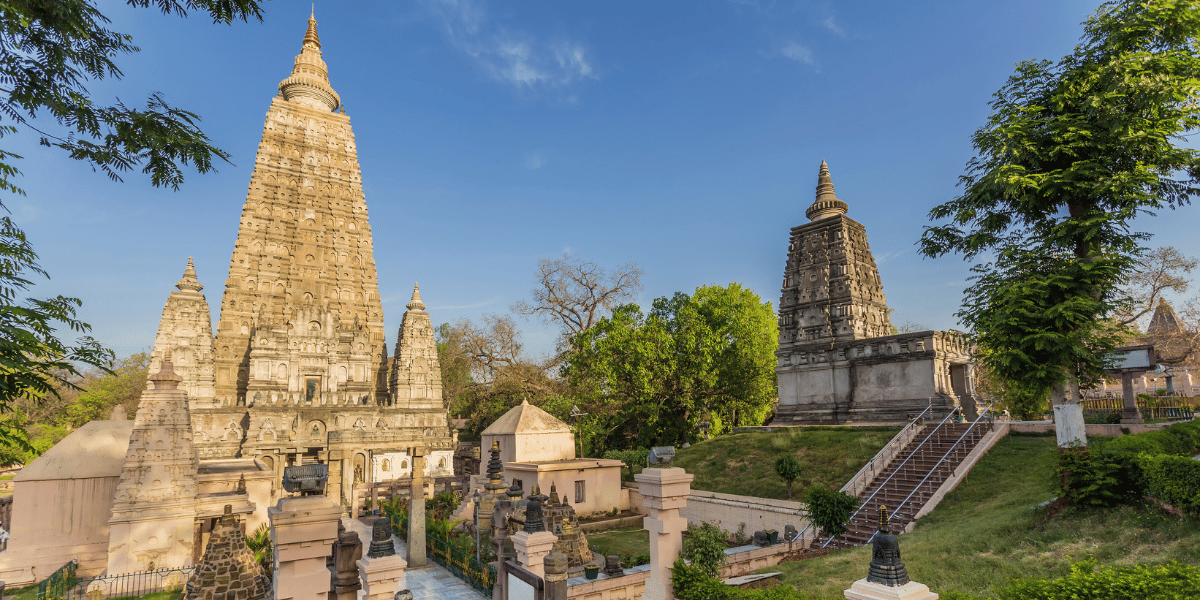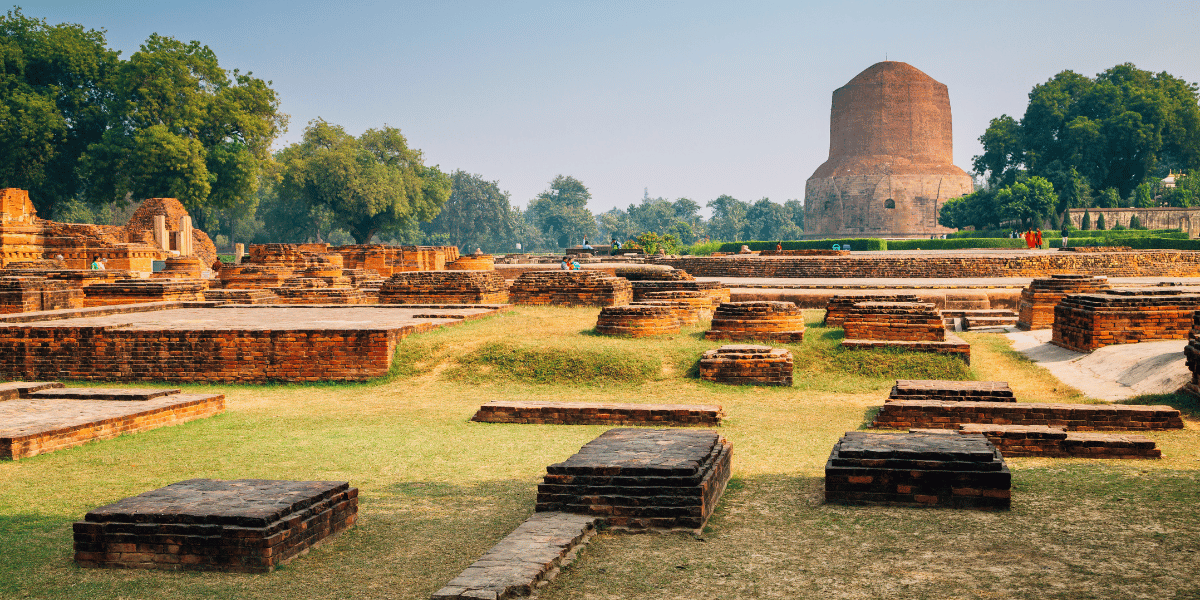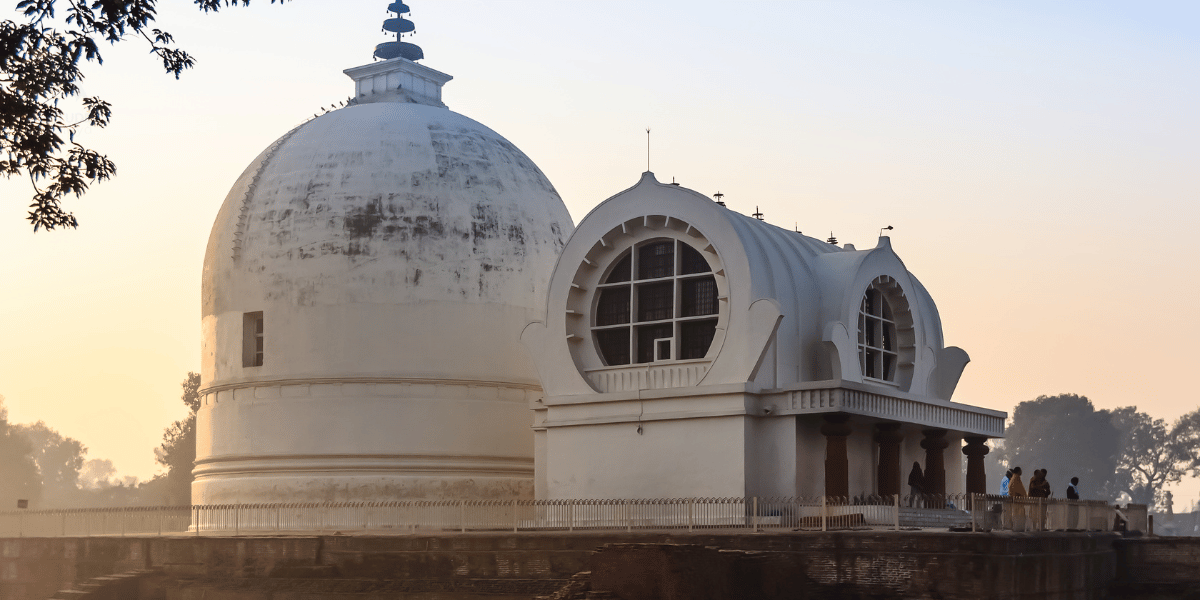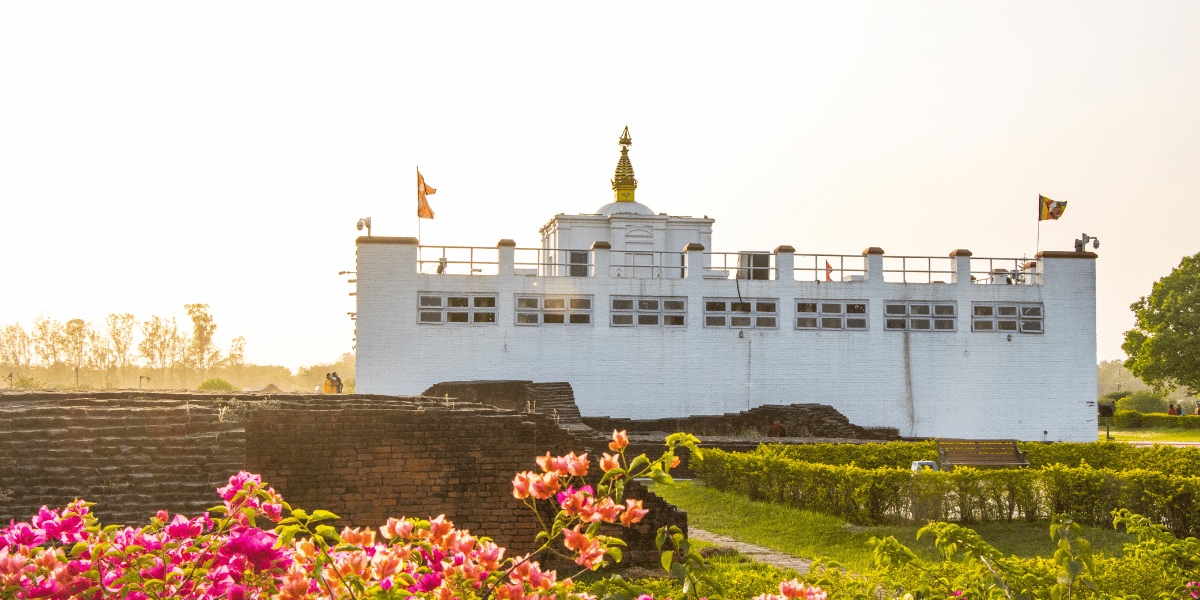Our India Nepal Buddhist Circuit Tour is an extensive pilgrimage that passes through the most important locations connected to the life of the Buddha, Siddhartha Gautam. This tour begins in India and continues to important sites including Lucknow, Varanasi, Sarnath, Kushinagar, Bodhgaya, Patna, and many more, each of which provides a different perspective on the historical and spiritual growth of Buddhism. You will spend most of your travel days in India and, at the end, enter Nepal, where your trip goes on to Lumbini, Tilaurakot, Kathmandu, and Nagarkot, where the Himalaya’s natural and cultural splendour heightens the spiritual experience. Along with following the physical path of Buddha's life, this trip offers you an immersive experience of India’s and Nepal’s rich cultural legacy and varied landscape. The journey offers the chance to explore historically significant antique stupas, monasteries, and temples. Additionally, you will also explore the cultural customs that have been upheld and honoured in these two countries for many years. The trip has a strong spiritual component that allows visitors to meditate, think, and establish a closer spiritual connection with the teachings of Buddha in the actual locations where he lived, taught, and became enlightened. This Buddhist Circuit Tour from Australia offers a profound understanding of the historical background and continuing influence of Buddhism on both personal and communal levels.
During your Buddhist Circuit Tour, you will visit two different countries, exploring their spiritual beauties and remarkable landmarks. Throughout the trip, you will see different cultures, traditions, and spiritually significant Buddhist landmarks with great historical and mythological importance. Starting in India and ending in Nepal, you will visit some of the most revered and important Buddhist monuments, and some of the major places are listed below that you will explore during the trip.
India Buddhist Circuit
Starting from India, you will reach Delhi and then continue your trip to Lucknow. It is a popular city known for its rich cultural heritage, exquisite Mughal and British colonial architecture, and delicious Awadhi cuisines. The city is renowned for its British Residency and ancient sites, including Bara and Chota Imambara. It is a thriving cultural centre for its renowned classical music, dance, and poetry, especially the legacy of beautiful Urdu literature. Next is Sravasti, a significant place for Buddhism, which was a prominent site where Buddha spent many monsoon seasons and delivered numerous teachings to his disciples. People from all over the world visit this place as it has significant Buddhist remains and stupas. Here, one can get deep insights into ancient remnants such as the Jetavana monastery. Another one is Varanasi, which happens to be one of the oldest towns in the world and is regarded in Hinduism for its spiritual and religious significance. Situated on the banks of the Ganges River, pilgrims swarm to its ghats for ceremonies and ritual washing. Every evening, the Aarti ceremony is held at the Ganga River ghats. It is a captivating spiritual activity to witness the intricate fire offering to the river, complete with music, chanting, and bell ringing. This daily ritual attracts guests because of its profoundly spiritual atmosphere and represents the adoration of the sacred river. Another attraction in Varanasi is Kashi Vishwanath Temple, one of the most famous and revered Hindu temples dedicated to Lord Shiva. It is a popular pilgrimage place because of its exquisite architecture, historical relevance, and spiritual significance. Hindus attend the temple to carry out rites and obtain blessings, which helps establish it as a major hub of Hinduism. Next is Sarnath, a cherished Buddhist pilgrimage destination where Gautama Buddha preached his first speech upon enlightenment. Numerous stupas and monasteries, including the well-known Dhamek Stupa, can be found in the city. The historical and archaeological significance of Sarnath, along with its tranquil surroundings, draw pilgrims and historians alike.
The next cherished pilgrimage destination is Bodhgaya, where Gautama Buddha attained enlightenment. It is among the most significant Buddhist pilgrimage sites worldwide, and pilgrims flock to the town to visit the place and offer prayers and tributes. Here you can see the Bodhi Tree, considered sacred because it is the tree under which Buddha attained enlightenment. Pilgrims and visitors come to meditate and reflect under its branches, seeking spiritual inspiration and tranquility. Similarly, Mahabodhi Temple is recognised as a UNESCO World Heritage Site. The complex of temples, where Buddha attained enlightenment, has a peaceful meditation garden and a striking erection. Further is Sujata Village, which is close to Bodhgaya, which has a strong Buddhist history. It is here that Sujata fed the famished Siddhartha Gautama just before he attained enlightenment. Those who are curious about the life and teachings of Buddha come to the community. Another significant attraction is the Niranjana River, running near Bodhgaya, of significant historical and religious value as it is where Buddha is supposed to have bathed and pondered before obtaining enlightenment. Visitors can find peace along the river. Last but not least are international monasteries, with a number of foreign monasteries that were constructed by different Buddhist nations and each exhibit distinctive architectural designs and cultural customs. These monasteries offer spaces for study and meditation, as well as a worldwide perspective on Buddhism. Another old city near Bodhgaya is Rajgir, known for its profound religious and historical significance in Jainism and Buddhism. Notable locations include Vulture's Peak, where Buddha preached, and hot springs with purported therapeutic benefits. Both pilgrims and history buffs are drawn to Rajgir. Besides that, here you will explore Shanti Stupa, which is an important Buddhist pilgrimage destination and a symbol of peace. Perched atop a hill, this white marble edifice provides sweeping vistas and a tranquil space for introspection and meditation. It draws tourists looking for beautiful scenery and a peaceful spiritual environment.
Next is Patna, which is Bihar's capital and also happens to be a historically and culturally rich city renowned for both its ancient legacy and contemporary relevance. It is home to significant historical landmarks, which makes it a thriving centre for anyone interested in culture and history. Remarkable landmarks such as Ajatshatru Fort, an ancient historical landmark connected to King Ajatshatru of Magadha, located in Rajgir that you will come across on the way to Patna, will give you an insight into the area's rich historical and architectural heritage. Next is Jivaka Avan Gardens, where Jivaka, the Buddha's physician, treated and tended to his injuries and illnesses. This is a historically noteworthy place for people who are interested in the life of Buddha and the history of Buddhism. The gardens offer a calm setting for contemplation. Last but not least is Nalanda, which was a prominent hub of learning in antiquity. Nalanda is most known for its historic Nalanda University, Nalanda Archaeological Museum, and the university's ruins that draw academics, historians, and visitors who are interested in Buddhist studies and ancient academia. Another significant place is Vaishali, known for its historical and religious sites in today’s Bihar and revered for its association with Buddha and Jainism. It's where the Buddha gave his final speech and declared the news of his approaching mahaparinirvana. Pilgrims and tourists visit here to observe Vaishali's historic stupas and Ashokan Pillar. After that, you will visit Kushinagar, located in Uttar Pradesh, known for its significance in the Buddhist faith, which is also home to the site where Gautam Buddha attained his final nirvana, or Mahaparinirvana. People visit this place to pay their respects and learn about Buddhist history while also exploring the Mahaparinirvana Stupa as well as other stupas and monasteries.
Nepal Buddhist Circuit
After you have completed visiting all the sacred places related to Buddha in India, you will jump on to Lumbini, located in Nepal, which is revered as the birthplace of Gautam Buddha. The location is home to multiple monasteries constructed by different nations as well as the revered Maya Devi Temple, which marks the precise birthplace of Buddha. Because of its great spiritual importance, Lumbini is a major destination for Buddhists all over the world. Besides the fascinating history, you will explore an area full of stunning architecture and spiritually important sites such as multiple international monasteries, temples, and monastic sites. Further, you will also visit Tilaurakot, which was the ancient capital of the Shakya kingdom, where Prince Siddhartha (later known as Buddha) spent 29 years of his life before he left to begin his journey of enlightenment. Those who are interested in the history of the area and the life of Buddha are drawn to the archaeological remains of the ancient city. As you enter Nepal, you will find significant differences in the architecture, culture, and ultimately geography as well. Here you will see the seamless change in the surroundings, as Nepal and India are neighbouring countries and Lumbini is on the border. You will get to see fusion in many things, from food to different aspects, that you will surely love.
The last one is Kathmandu, Nepal’s capital city, well known for its historical sites, lively streets, and rich cultural legacy. People may think Nepal only has to offer the Himalayas and high-rise hills, but Nepal has more than just mountains to offer, such as a unique experience from the city's blend of historic temples, vibrant markets, and traditional Newari architecture known worldwide. Visitors may expect a unique experience from the city's blend of historic temples, vibrant markets, and traditional Newari architecture. While you are here, you will visit some of the most significant Buddhist landmarks, such as Swayambhunath Stupa, located atop a hill in Kathmandu, popularly referred to as the Monkey Temple, an ancient stupa. It is one of the most revered Buddhist pilgrimage sites in Nepal and a UNESCO World Heritage Site. The stupa is well-known for its spiritual significance and the abundance of monkeys that live around it. It also provides breathtaking views of the city. Next is Kopan Monastery, perched on a mountaintop close to Kathmandu. It is a well-known Tibetan twist and is a Buddhist monastery renowned for its Buddhist teachings and meditation retreats. It draws tourists and spiritual seekers who want to practice meditation, learn about Tibetan Buddhism, and take in the tranquil surroundings. The last one is the Boudhanath Stupa, which is also one of the biggest stupas in the world. It is a popular Buddhist pilgrimage site, especially for Tibetan Buddhists. It is one of the biggest spherical stupas in Nepal because of its enormous mandala. The stupa is a centre of culture and spirituality, encircled by a thriving population of Tibetan Buddhists, monasteries, and stores.
Besides the religious place, you will also explore the country's topnotch sites and hill stations, such as Bhaktapur Durbar Square, also known as Khwopa, situated in the old city of Bhaktapur, close to Kathmandu. It is widely recognised for its exquisitely maintained mediaeval architecture and abundant cultural legacy. Numerous temples, palaces, and monuments that showcase Newari artistry and craftsmanship can be found in the square. It is a popular destination for those who enjoy architecture and history, and it is recognised as a UNESCO World Heritage Site. Later on, you will visit a hill station known as Nagarkot, popular for its breathtaking sunrise and sunset views as well as panoramic himalaya vistas, which on clear days include Mount Everest. Trekkers and environment enthusiasts adore this peaceful hill station, which is close to Kathmandu and provides a peaceful diversion from the busy city. At sunrise and sunset, Nagarkot's vantage points offer spectacular views of the Himalayan range, drawing in photographers and nature lovers looking for a tranquil getaway amidst stunning scenery.
What to Expect?
Our 15 days Buddhist Circuit Tour offers an enriching journey through major historical, spiritual, and cultural landmarks that will leave you in awe. This is one of the few trips where you will visit two different countries and experience different cultures, histories, and beauty that seamlessly blend together. The tour starts from Delhi, India, with a short flight to Lucknow, and continues to Varanasi, one of the world’s oldest cities and a holy site due to the Ganges River. While you are here, you will explore several monuments that are revered by both Buddhists and Hindus, creating a religious harmony. During the tour, you will visit and explore most of the places related to the life of Gautam Buddha, from his birthplace to the site where he gave his first sermon (Sarnath). You will visit historic stupas and museums that give you an insight into Budhhas’s life and his teachings. Alongside places such as Mahabodhi Temple in Bodhgaya, the site of Budhha’s enlightenment offers a deep spiritual experience. Moving on to other places, such as Patna and Kushinagar, where you will learn the rich historical background of Budhha’s Parinirvana. The journey scratches to Lumbini, Nepal, where you will visit its tranquil gardens and temples and discover the ancient Kapilvastu, Tilaurakot, where Buddha spent his life before heading out on a spiritual journey. As you travel to Kathmandu, the architecture, culture, and geography drastically change, which you will enjoy. From vast plain land, you will now be in a valley surrounded by lush green hills with a lively climate and an overall ambience. While you are in Kathmandu, you will visit major Buddhist stupas and monasteries with great beauty and history. To end your trip, you will go for an overnight stay at one of the most beautiful hill stations, Nagarkot, for a mountain view and a celestial sunrise and sunset to end your tour in the most beautiful way possible. The circuit tour, which combines profound spirituality, extensive history, varied culture, and spectacular scenery, ends in Kathmandu, a city of temples and thriving culture where you will relax and remember all the experiences that you have collected.
This tour can be your ideal trip if you are looking for a peaceful and spiritual trip to get a break from your day-to-day life. Our India Nepal Buddhist Circuit Tour is a profound adventure that interweaves the historical, cultural, spiritual, and geographical strands of Buddhism's legacy. From the holy ghats of Varanasi to the site of enlightenment in Bodhgaya, and from the Parinirvana stupa in Kushinagar to the tranquil birthplace of Buddha in Lumbini, each place offers an exclusive and profound experience. The tour not only enables one to follow in the Buddha’s footsteps but also immense oneself in the rich tapestry of customs and landscapes that characterise this age-old spiritual path. Join us on a rich journey to feed your eyes and soul.


 Adventure
Adventure
 Couple
Couple
 Family
Family
 Luxury
Luxury
 Motorbike
Motorbike
 Photography
Photography
 Wildlife
Wildlife
 Yoga
Yoga
 Annapurna
Annapurna
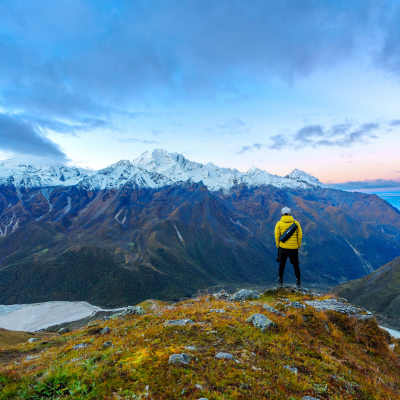 Langtang
Langtang
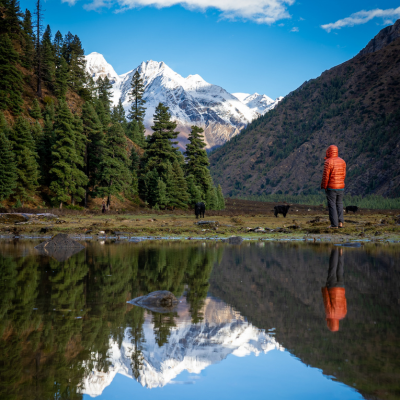 Dolpo
Dolpo
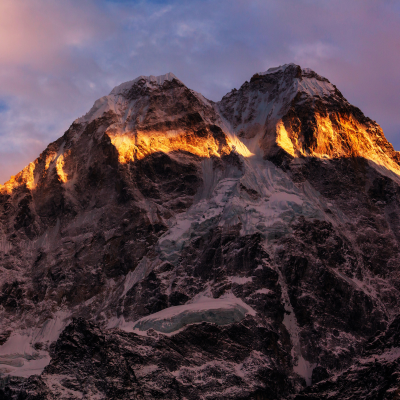 Eastern Nepal
Eastern Nepal
 Everest
Everest
 Manaslu
Manaslu
 Western Nepal
Western Nepal
